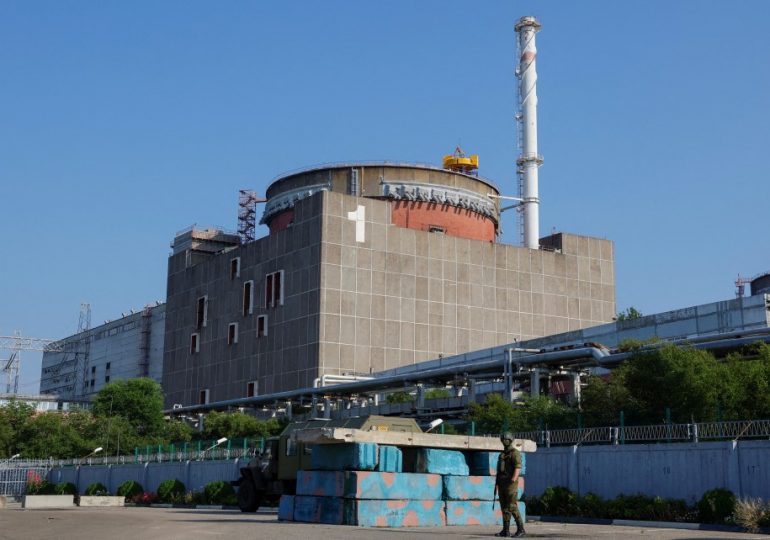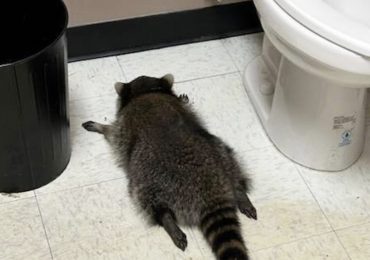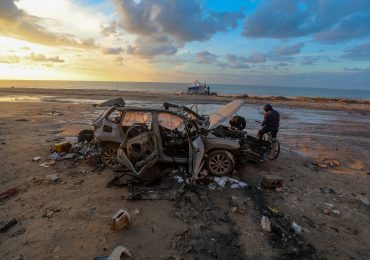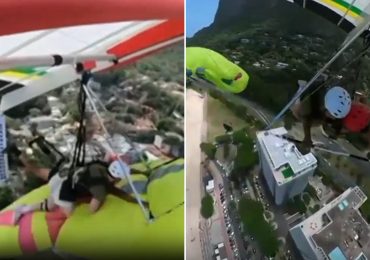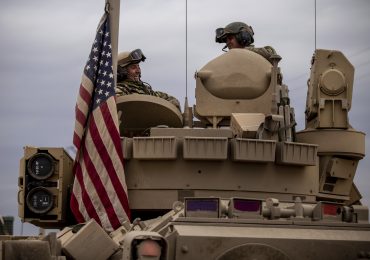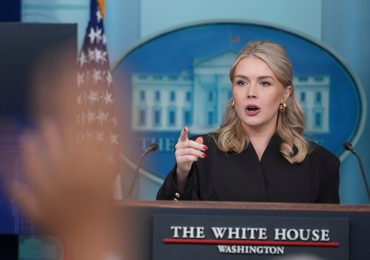RUSSIA has been accused of a false flag attack after Europe’s biggest nuclear plant was blasted by drones.
Russia’s nuclear power corporation, Rosatom, had initially accused Ukraine’s military of launching a series of attacks on the Russian-held Zaporizhzhia nuclear power station in south-eastern Ukraine.
ReutersThe Russian-occupied Zaporizhzhia nuclear power station in south-eastern Ukraine[/caption]
AFPRussian troops took over the power plant during the first few weeks of the Ukraine War in 2022[/caption]
APA Russian guard stands outside the power plant[/caption]
There is grave concern surrounding the safety measures of the power plant
But a Ukrainian intelligence official quickly dismissed the claims and said Kyiv had nothing to do with any strikes on the station, suggesting they were the work of Russians themselves.
The U.N.’s nuclear watchdog called for such incidents to cease immediately.
The firm warning came after Russia urged world leaders to denounce the incidents.
Both Russian officials and the U.N.’s International Atomic Energy Agency, however, said radiation levels were normal and damage not severe.
Zaporizhzhia is the largest of Ukraine’s four nuclear power plants, which together used to provide about half the country’s electricity.
The plant, which lies close to the front lines, was seized by Russian troops within weeks of their full-scale invasion into Ukraine in February 2022.
But each side continues to accuse the other of attacking the plant and risking a nuclear disaster.
Rosatom said three people were hurt in Sunday’s attack, one of which was seriously injured.
A statement from the nuclear power company claimed the first strike on the plant hit an area near a canteen, injuring the three staff members, but did not indicate what weapon had been involved.
Within 30 minutes, a drone had attacked a cargo loading area and another drone subsequently struck the dome of the sixth reactor.
The statement said Rosatom “categorically denounces the unprecedented attack” and called on IAEA chief Rafael Grossi and the European Union to immediately react to the threat to safety.
Russian Foreign Ministry spokeswoman, Maria Zakharova, urged world leaders to condemn the act of “nuclear terrorism” in a damning attack on Ukraine president, Volodymyr Zelensky.
She wrote on Telegram: “How many more times must the Ukrainian military target the Zaporizhzhia plant in order for the West and that monster Zelensky, nurtured by them, to stop repeating this deadly act of their bloody circus?”.
A spokesperson for Ukraine’s HUR Main Intelligence Directorate, Andriy Usov, denied any involvement.
“Russian strikes, including imitation ones, on the territory of the Ukrainian nuclear power plant … have long been a well known criminal practice of the invaders,” he wrote on Telegram.
The IAEA, which has experts at the site, reported on social media platform X (formerly Twitter) that there had been a single casualty.
“Damage at unit 6 has not compromised nuclear safety, but this is a serious incident w/ potential to undermine integrity of the reactor’s containment system,” the agency said.
The IAEA’s Grossi added there had been three “direct hits” to such structures, stating “this cannot happen”.
Earlier this year, Grossi warned of the pressing dangers of the nuclear plant.
Asked on a scale of one to ten – “ten being the most dangerous and one being secure” – what he would rank Zaporizhzhia, he said: “I think there are days where you are near ten, and there are days that nothing seems to happen – and the problem is this.
“The complete uncertainty because this is a war.”
The nuclear plant has six Soviet-designed VVER-1000 V-320 water-cooled and water-moderated reactors containing Uranium 235, and also has spent nuclear fuel at the facility.
Reactors 1, 2, 5 and 6 are in cold shutdown, while Reactor No. 3 is shut down for repair and Reactor No. 4 is in so-called hot shutdown, according to the plant.
Officials in Ukraine have also claimed bombs have been placed in the reactors, which could trigger a disaster ten times more devastating than Chernobyl in 1986.
Inspectors inside the Russian-occupied Zaporizhzhia Power Station have already warned that the site is spiralling towards catastrophe.
Leaking, land-mined and long feared to be a terror target for Vladimir Putin, Europe’s biggest nuclear plant is stuck in a warzone and on the brink of disaster.
Last summer, workers at the plant called it a catastrophe “waiting to happen” – reporting the state of degradation at the site was not far off a Chernobyl.
It is also feared to be a major terror target.
President Zelensky last summer issued repeated warnings that Russia was planning a terror attack on the plant.
His intelligence agency claimed Russia was planning to trigger a minor explosion – which would not blow the entire plant – and make it appear that Ukraine forces were responsible.
In July, staff at the plant held chilling nuclear disaster drills at and around the vast complex.
Nuclear experts have said that a major blast at the plant would affect a billion people across 40 countries.
AFPRussia and Ukraine have accused each other of attacking the Zaporizhzhia Power Station[/caption]
ReutersFive of the six reactors on site[/caption]
AFPRussia retains control of the power plant – for now[/caption]
Leave a comment
